Blueberries are in full production at present. These pretty shrubs, with delicate, pink, bell-shaped flowers, give way to delicious purple-blue berries full of goodness and high in antioxidants.
Just two blueberry bushes will give enough fruit for a couple to eat blueberries every day for breakfast through spring and summer. But the birds love them so its essential to net them at this time.
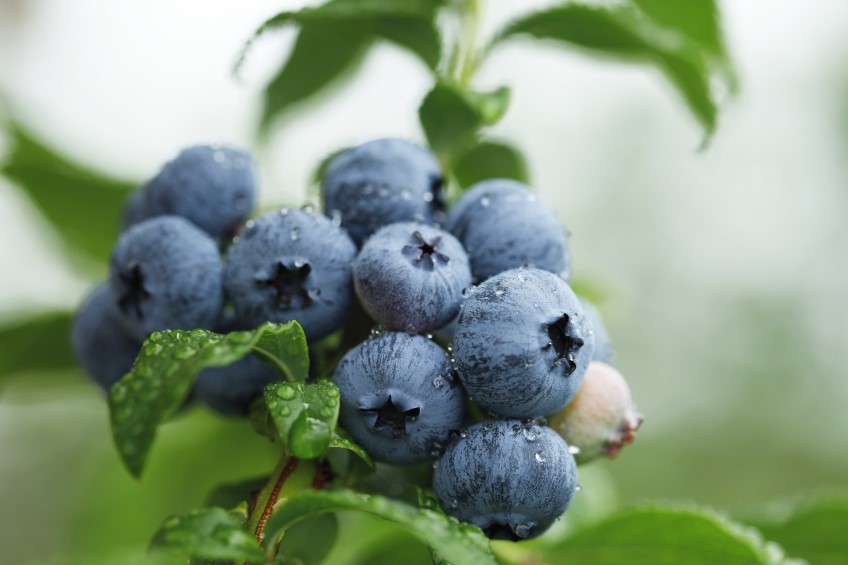
See our story here about growing blueberries. Click on the image
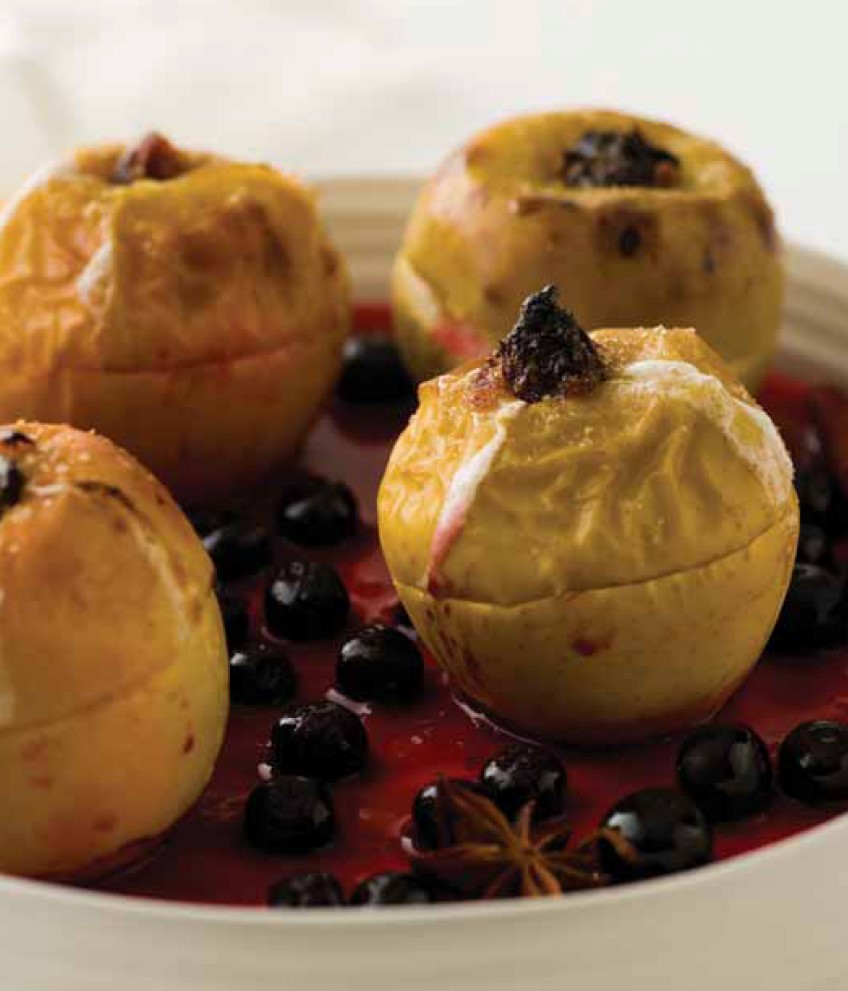
Gabriel Gate has a delicious recipe for blueberry compote with baked apple in his book ‘Recipes for a Great Life’, published by Hardie Grant, which you can find online on their website.
Prune wisteria.
A strict pruning regime is essential once wisteria is mature. The main prune is done at this time in late spring, after the main flush of growth.
Once wisteria has flowered it puts on excessive whippy shoots. These must now be removed as they won’t ever flower and will encourage invasion and aggressive
growth. Prune all new shoots back to within 1-2 bud pairs now. In January the wisteria will again produce more whippy shoots and these also should
be removed. During November/December you can remove dead and insect infested stems. After pruning feed with Kahoona or Sudden Impact for Roses (Neutrog)
or any organic based fertiliser with a full complement of major and minor trace elements.

For more information about the care and culture of wisteria, click on the image to read the advice from wisteria expert, Graeme Parr
Camellia Care
Camellias are on the grow now after their flowering season. It’s time to replenish nutrients and encourage new leaf growth for next winter’s flowering.
We suggest lightly loosening the soil around the trunk out to the drip line with a fork not a spade, as roots are shallow, close to the surface and
easily damaged. Remove any mulch and sprinkle granular wetting agent if the soil around your camelia is dry. Wait 24 hours and then apply a suitable
acid loving fertiliser (Kahoona by Neutrog) or All Purpose Gardenia, Azalea & Camellia food (Richgro). Finish with a deep soaking of water with
seaweed solution (Harvest, Seasol or Nitrosol). Water a second time then replace a mulch of either cow manure, Who Flung Dung or lucerne. Make a calendar
note to repeat this process in January/February. During hot dry weather, watch out for two spotted mite leaf attack and camellia scale. Spray thoroughly
every week with Eco Neem or Eco Oil to prevent attack during the warm weather ahead.
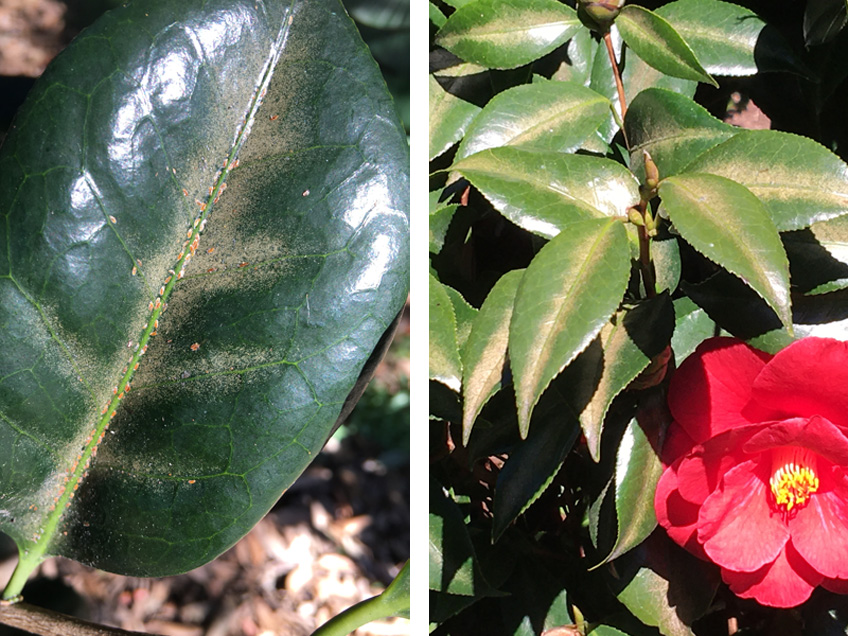
Camellia scale (left) and Camellia tea mite
Seed Saving
Don’t rush to remove spent flower heads. If you allow the seeds to develop, then ripen, then fall; some will self sow. Or you can collect the seed and
store in paper bag or envelope and sow next autumn. Examples are Peony poppies, aquilegia (Grannies Bonnet), nigella (Love-in-the-mist) and snapdragon.
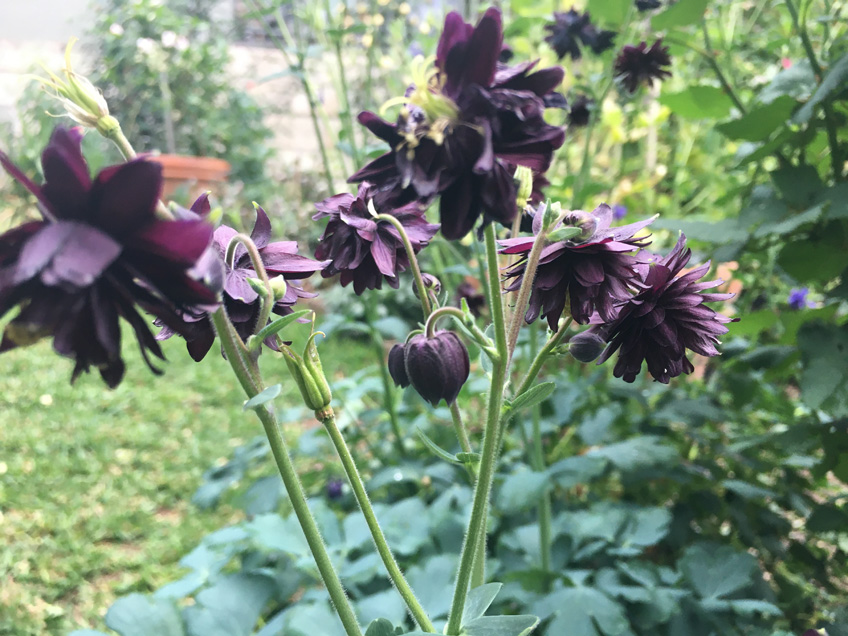
Aquilegia flower
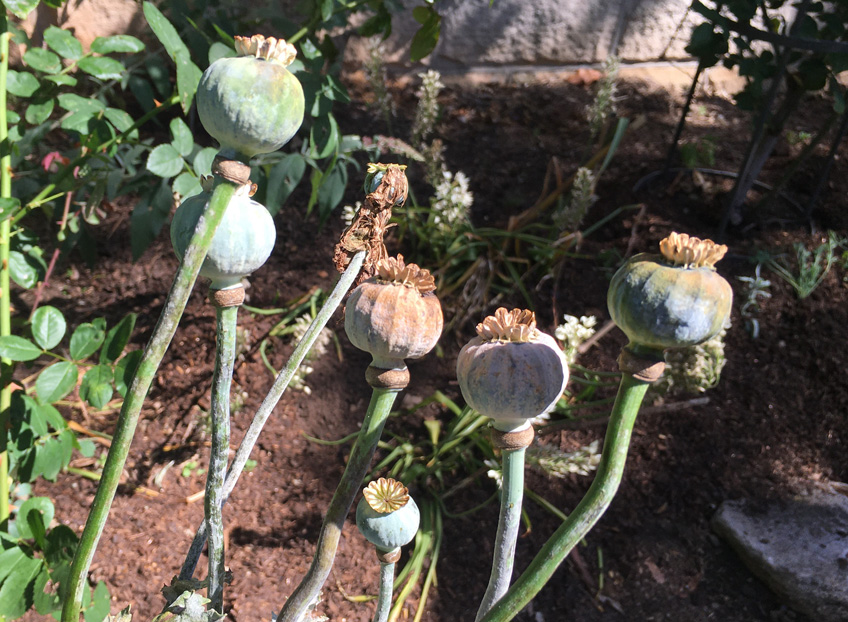
Allow seed heads of Grannies Bonnet to develop after flowering.
Feed Upside Down Orchid
Stanhopea flowers at Christmas with spikes that appear through the bottom of its basket. Encourage that flowering with regular monthly doses of orchid
food (Strike Back for Orchids) either pellets or liquid. This orchid loves a morning sun spot, with protection from hot afternoon sunshine.
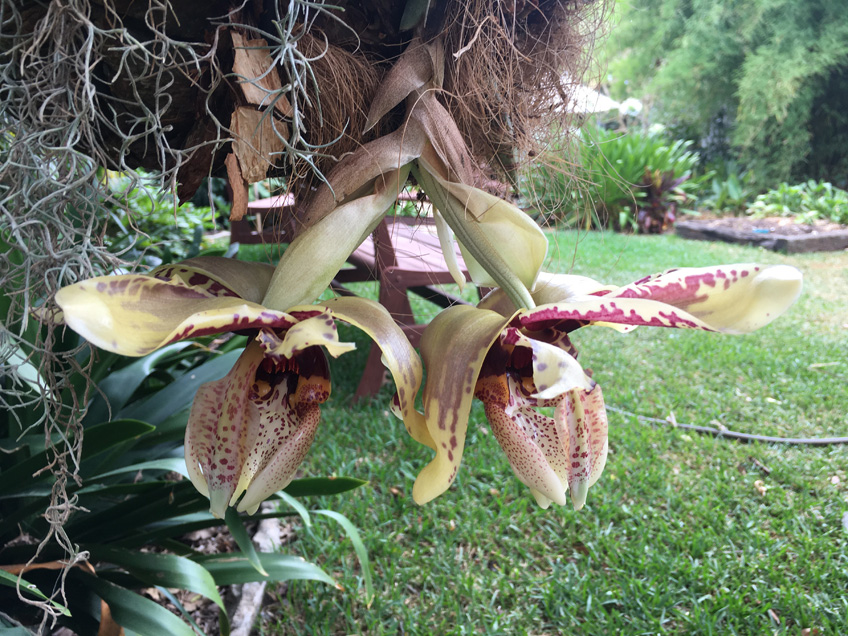
Feed Upside-down orchid to encourage summer flowering.